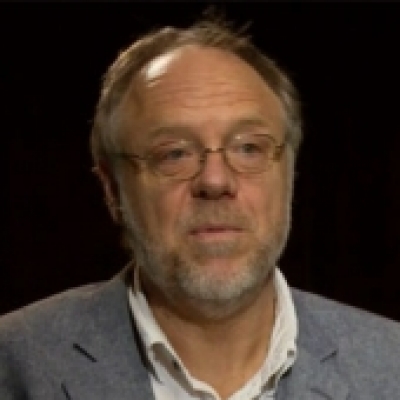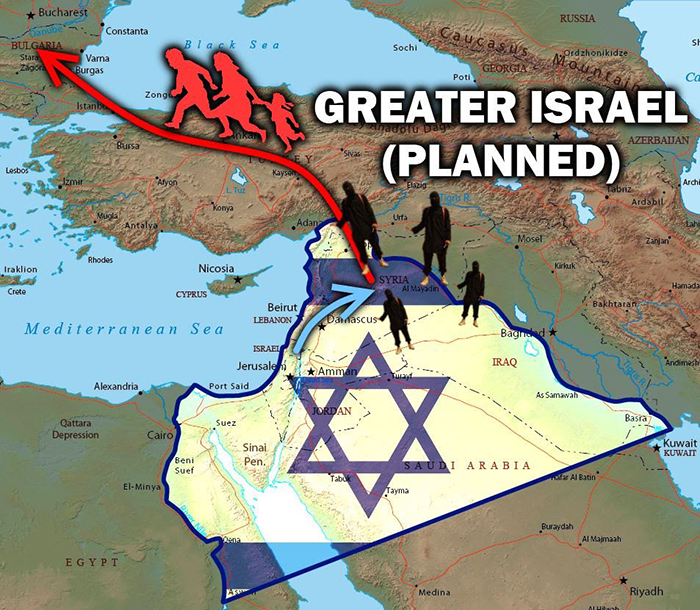A political solution will require a determined Wahhabi resocialization
 Kevin Barrett
Kevin Barrett
The War of Syrian destabilization is almost over. Across most of the length and breadth of Syria, people are getting back to work and rebuilding their lives. Displaced citizens are returning to their former homes. Gradually people are coming back together as the foreign-backed mercenary war that tore the country apart fades into the yellowing pages of history.
But in the northwest corner of Syria, a major mop-up operation remains on hold. Idlib city, capital of the Idlib Governate, is the last holdout of the motley array of rebels, mercenaries, terrorists, and opportunists who declared war on the Syrian government in 2011. That chaotic constellation of feuding forces has now been decisively defeated by Syrian loyalists — with the help of the Axis of Resistance and its Russian ally. But the victorious Syrian government faces a tough choice: should it fight all-out for Idlib, which would require targeting mercenary forces that are squatting in civilian neighborhoods and using those civilians as human shields? An all-out effort to liberate Idlib would inevitably cause a great many civilian casualties. And even after what could only be an extremely bloody victory, what would the Syrians do with the surrendering remnants of the 60,000 militants currently ensconced in Idlib?
In August 2019 the Syrian army made significant advances into northern Hama and southern Idlib Governate, after anti-government mercenaries, led by al-Qaeda affiliate Hay’ah Tahrir al-Sham (HTS), continually violated the shaky ceasefire negotiated under the Astana framework and its Idlib memorandum of September 2018. In late-August, Syrian troops recovered the strategic city of Khan Sheikhoun. The eventual liberation of all of Idlib, through political agreements as well as military success, looms on the horizon.
But despite the tactical gains, Syrian forces face a possible strategic stalemate. HTS has established de facto dominance over the chaotic constellation of rebel groups, and still enjoys backing from Turkey (since the Turks failed to impose their puppet group, the so-called National Front for Liberation, as the leader of the anti-government front, they have had to content themselves with supporting HTS).
The key strategic question is when and how the Syrian government will succeed in re-establishing full sovereignty over all of its territory. HTS hopes it can continue to consolidate military, political, and economic control over Idlib Governate, ultimately forcing Damascus to accept a Turkish-backed or even Turkey-annexed quasi-independent statelet on formerly Syrian territory. This option is of course unacceptable to Syria, hence the stalemate.
Ironically, the two “enemies,” Syria and Turkey, share a common strategic interest: re-establishing peace, security, and prosperity in the region. And they have a common enemy: the partisans of the Zionist-instigated Oded Yinon plan to break up the Muslim East into dozens of tiny, powerless statelets incapable of challenging Zionist hegemony.
The Oded Yinon destabilization plot against Syria was intended to fragment that country along sectarian lines, rendering it too weak to help liberate Palestine, or even recover the colonized Golan Heights, otherwise known as the “Stolen Golan.” The War of Syrian destabilization, long planned in the corridors of power in Tel Aviv and Washington, was officially launched at a February 2011 meeting in Paris, where two Zionists and a bedouin — namely, US Ambassador to Israel, Dan Shapiro, US former ambassador to Lebanon Jeffrey Feldman, and Saudi Arabia’s then intelligence chief, Bandar bin Sultan — decided to pour weapons and later mercenaries into Syria in an effort to overthrow the Damascus-based government. Along with Balkanizing the Muslim East on behalf of Zionism, the Great Destabilization War also aimed at rolling back the Iran-backed Axis of Resistance and redrawing the oil-and-gas-pipeline map in favor of Israel, Turkey, and Qatar, while damaging alternative pipeline plans favoring Iran and Syria.
The Oded Yinon plot against Turkey, by contrast, uses Kurdish separatism as its primary weapon. The Zionists have been the primary sponsor and instigator of Kurdish separatism since at least the early-1960s, with the post-9/11 Zionist-occupied US jumping on board in recent years. Today, Turks are fighting in Syria not to destabilize the Damascus government, but to protect their own territorial integrity by preventing Kurdish separatists from establishing a US-supported beachhead on their borders.
So all of the major, legitimate parties to the conflict — namely the Astana participants Syria, Turkey, Iran, and Russia — have the same ultimate interest: healing the region and defeating all forms of Oded Yinon style destabilization. By contrast, the three increasingly marginalized, illegitimate parties to the conflict (who were in fact the original aggressors), namely the US, the Wahhabi Gulf Arabians, and the Zionist entity, continue trying to spread chaos and instability. All three bad actors are still supporting mercenaries who aim to Balkanize the region. The Saudis and their friends continue to pour weapons and money, albeit at reduced levels, into the coffers of HTS and other al-Qaeda-allied pseudo-Islamic forces; while the Zio-Americans continue to lavish weapons and money on their Kurdish separatist militias, the People’s Protection Units (YPG) and Syrian Democratic Forces (SDF).
The looming strategic endgame could be a politically negotiated solution in which Turkey and Syria, backed by Iran and Russia, work together to eliminate all Oded Yinon forces, whether Wahhabi or Kurdish, and establish full sovereignty for all countries in the region. That naturally includes Iraq, where Kurdish separatists, supported by the Zionists, have also been pursuing Oded Yinon related activities.
The ideological framework for such a solution would have to be inclusivist and pan-Islamic. Islamic Iran and increasingly-Islamic Turkey can lead the way toward overcoming sectarianism, especially the ultra-toxic Wahhabi-obscurantist variety, as well as nationalism, which Islam has always rejected (Kurds, like Iraqis, Syrians, Turks, Iranians, and so many others, are fully, equal members of the Muslim Ummah, and should follow the lead of the great Kurdish thinker Bediuzzaman Said Nursi in rejecting nationalism in favor of pan-Islamic solidarity).
While all legitimate parties to the conflict can easily agree to oppose Zionist-supported Kurdish separatism, they may find it harder to agree on what to do with the 60,000 anti-Syrian-government fighters and sympathizers who remain in Idlib. This is where pan-Islamism could provide a solution. According to an Al-Monitor article by Semih Idiz, “Turkish analysts… believe that Moscow and Damascus are set on pushing the Sunni opposition from the province altogether, without differentiating between moderates and jihadis.” This misleadingly-described problem of sorting out “moderates” from “jihadis” involves finding a way to separate the troublemakers from their Saudi paychecks and/or their Wahhabi beliefs. Perhaps the Turks, Syrians, and Iranians could work together to find a common framework for helping educate “recovering Wahhabis” on the importance of Islamic unity.
In any case, the gradual elimination of the last remaining pockets of pro-destabilization mercenary forces in Idlib will proceed in fits and starts. The Turkish “observation posts” in Idlib Governate are growing increasingly precarious as the Syrian army slowly advances, putting pressure on Turkish President Erdogan to finalize his U-turn and fully normalize relations with Damascus — a move that could unite Syria and Turkey in joint opposition to Zio-American-sponsored Kurdish separatism, and in common resolve to overcome sectarianism. Such a development could hasten the arrival of the Zionists’ worst nightmare: a peaceful and increasingly united Muslim East.



No comments:
Post a Comment